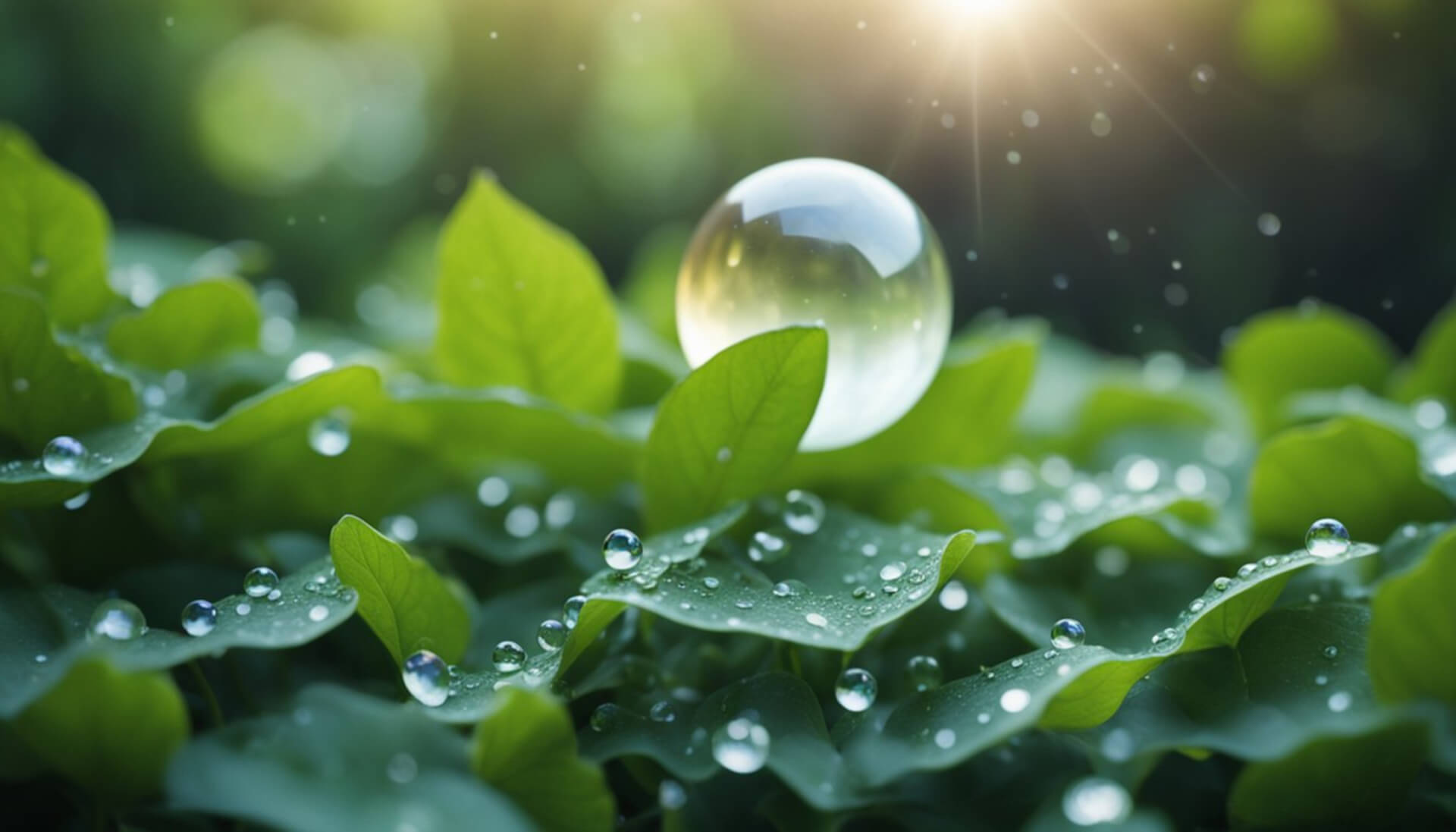June stands out as one of the select months graced with not one, but three gemstones celebrated as birthstones. Each stone showcases distinct qualities and colors, adding to the allure for those born in the sixth month of the year. The primary gems associated with June are pearl, alexandrite, and moonstone.
Pearls are classical and known for their elegant luster and timeless charm. Meanwhile, alexandrite is famed for its remarkable color-changing property, and moonstone is treasured for its ethereal glow, often compared to moonlight.
Understanding the significance of one’s birthstone goes beyond mere aesthetics; they are steeped in history and folklore.
Pearls, for instance, have been adorned as a symbol of purity and sophistication, passing down through many cultures as cherished heirlooms.
Alexandrite, a relatively recent discovery, surprises with its chameleon-like ability to shift from shades of green to red depending on the lighting. Meanwhile, with its unique adularescence, the moonstone has been connected to romance and mysticism.
When selecting a June birthstone, one must consider the visual appeal and design and the durability and proper care specific to each gem to ensure its longevity.
The Significance of Birthstones

Birthstones carry a wealth of history and symbolism. They are often thought to bring fortune and protection to those who wear them. Each month is represented by one or more gemstones with unique meanings and historical significance.
Historical Background
Ancient civilizations such as the Romans and Greeks held gemstones in high esteem, believing them to have profound power and meaning.
Birthstones, as they are known today, can be traced back to these cultures, where they were linked to the zodiac and associated with specific months of the year.
The traditionally recognized birthstones for June have been pearls, moonstones, and alexandrites.
Pearls symbolize purity and are often linked with love and fertility. Meanwhile, moonstone is believed to bring good fortune and was revered by the ancients for its ethereal appearance. Lastly, alexandrite was admired for its ability to inspire imagination and creativity.
June’s Birthstones Overview

June stands out with its unique array of birthstones, offering a distinct choice between Pearl’s timeless elegance, Moonstone’s enigmatic charm, and the rare color-changing wonders of Alexandrite.
Each gemstone brings its own spectrum of colors and qualities that mirror June’s diversity in beauty and rarity.
1. Pearl
Pearls are synonymous with classic beauty and elegance. They are unique as they are the only gems derived from living creatures, primarily oysters and mollusks.
Pearls’ colors range from traditional creamy white to black, with shades of pink, blue, and green. Due to their natural luster and radiance, pearls have been treasured for centuries and are often associated with purity and wisdom.
2. Moonstone
Moonstone exhibits an enchanting play of light known as adularescence, which creates a billowy glow reminiscent of moonlight.
Typically found in shades that range from colorless to grey, brown, yellow, green, or pink, its shimmers make it a favorite for jewelry. The stone’s connection to the moon has historically imbued it with the qualities of mystery and magic.
3. Alexandrite
The remarkable feature of Alexandrite is its color-changing ability; it shifts from green in daylight to red under incandescent light.
This rare gem is highly prized for its distinct phenomenon, rarity, and hardness, making it both a desirable and durable gem for jewelry. The dramatic color shift is often likened to the duality of June’s season—bridging the transition from spring to summer.
Pearl Characteristics

Pearls are unique gemstones produced by mollusks, which include oysters and mussels. They are distinguished by their organic origin, lustrous nacre layers, and variety, ranging from natural pearls found in the wild to cultured pearls created with human assistance.
Formation
Pearls are formed when an irritant, often a grain of sand, enters a mollusk. The mollusk secretes nacre, a combination of aragonite and conchiolin, in layers around the irritant to protect itself.
Over time, this process results in the creation of a pearl. While natural pearls are made without human intervention, cultured pearls are produced by placing a tissue graft from a donor mollusk into the host, stimulating nacre production.
Types of Pearls
There are several types of pearls, each with their cultivation methods and characteristics:
- Akoya Pearls: Traditionally harvested in Japan and China, they are renowned for their round shape and lustrous finish.
- Tahitian Pearls: Found in French Polynesia, these pearls are known for their larger size and unique dark colors.
- Freshwater Pearls: Usually cultivated in lakes and rivers in China, they come in various shapes and sizes with a softer luster.
- South Sea Pearls: Cultivated in the waters of Australia, Indonesia, and the Philippines, these are the largest cultured pearls with a satiny luster and thick nacre.
Pearl Colors
The color of a pearl is a result of the type of mollusk that produced it and its environment. Pearl colors include:
- White: Classic and widely popular, often seen in Akoya and South Sea pearls.
- Black: Mostly associated with Tahitian pearls, ranging from charcoal to a deep greenish-black.
- Pink, Gold, Blue: Freshwater and South Sea pearls can exhibit these shades, adding to their appeal.
Pearls can also display overtones, which are translucent colors that lie over a pearl’s main body color, adding depth and radiance.
Cultural and Historical Relevance of Pearls

Pearls have long been honored in history and mythology, cherished as symbols of purity and elegance. They’ve been adored by royalty and revered as talismans of good luck.
Pearls in Mythology
In Ancient Greece, pearls were believed to be the hardened tears of the goddess of love, Aphrodite, embodying the ideals of love and beauty.
Similarly, Ancient Chinese legends spoke of pearls as the jewels derived from a dragon’s brain, a signifier of wisdom and strength. These cultured gems were thought to impart good luck and protection, often serving as talismans to those who possessed them.
Historical Significance
Throughout history, pearls have been synonymous with wealth and royalty.
Particularly in Imperial Russia, the czar and other members of the imperial family often adorned themselves with pearls to signify their high status.
Moreover, the pearl birthstone was prized by various cultures as a representation of purity and modesty, making it a symbolic gem worn frequently by royalty.
The endurance of pearls in fashion and decor across centuries attests to their timeless appeal and acknowledged societal value.
Alexandrite Properties

Alexandrite is highly valued for its remarkable optical characteristics, especially its ability to change color under different lighting conditions.
Color-Changing Gemstone
The most captivating feature of alexandrite is its ability to exhibit different colors depending on the nature of ambient light.
In daylight or fluorescent light, the gemstone appears green to bluish-green but shifts to a red to purplish-red shade under incandescent light. This unique optical phenomenon is known as the alexandrite effect.
Sources and Origins
Alexandrite was first discovered in the Ural Mountains of Russia in the 19th century.
Today, key sources include Russia, Brazil, and Sri Lanka. Each locale contributes to the gemstone’s availability in the market, with the color and quality varying by origin. Brazilian alexandrite tends to have a more pronounced color change than those from other locations.
Moonstone Features
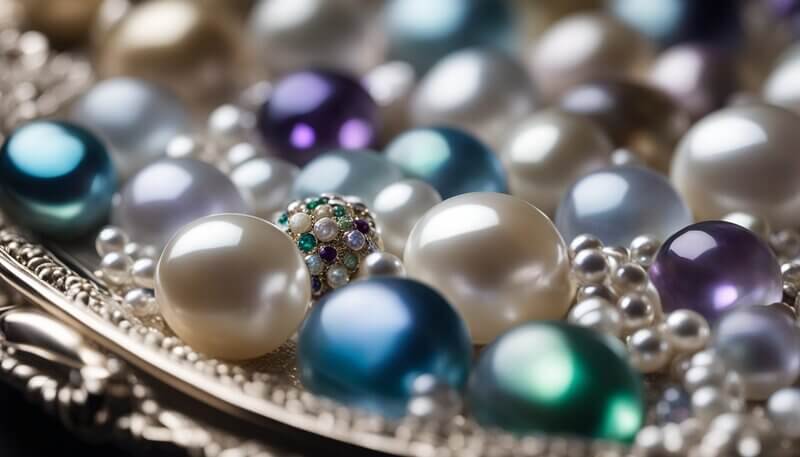
Moonstone, admired for its transcendent glow, is a feldspar mineral embodying elegance and mystery. It is particularly cherished for its unique characteristic, adularescence—a mesmerizing light that seems to float within the stone.
Appearance and Qualities
Adularescence: This phenomenon is the hallmark of moonstone. It manifests as a milky, bluish luster that glides across the stone’s surface, reminiscent of moonlight floating on water. The sheen is due to the interlayering of two types of feldspar with different refractive indexes.
Texture and Composition: Moonstone belongs to the feldspar group and is predominantly composed of orthoclase and albite.
Over time, as the newly formed mineral cools, these two minerals separate into stacked, alternating layers.
Translucency: Moonstones are often translucent, which enhances their adularescence. The captivating light play within the gem is best viewed when the stone is cut en cabochon.
This style presents a smooth, rounded surface rather than faceted angles.
Color Range: They can exhibit a color range from colorless to gray, brown, yellow, green, or pink. The body color can influence the stone’s overall appearance and value.
Cultural Significance: Throughout history, moonstones have been associated with various beliefs and virtues. They are often considered symbols of fortune and have been used in jewelry for centuries.
Gemstone Care and Maintenance
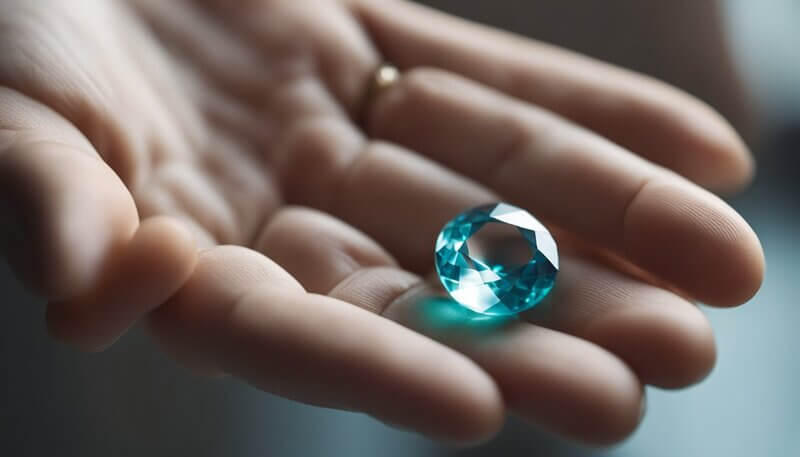
It is crucial to maintain the luster and integrity of gemstone jewelry like rings, necklaces, and pendants. Proper cleaning and storage extend their life and ensure they remain a sparkling part of your collection.
Cleaning Methods
Pearls: Gentle care is vital. One should lightly wipe pearls with a damp cloth, avoiding harsh chemicals.
If the piece of jewelry is a pearl necklace, it’s important to prevent the string from getting wet to maintain its strength.
Alexandrite: This gemstone can be cleaned with mild dish soap and warm water.
Use a soft brush, rinse thoroughly, and dry with a lint-free cloth.
Moonstone: Because of its softer composition, moonstone should be cleaned sparingly with a mild soap and water mixture. If needed, use a soft brush.
- Do’s:
- Use soft, lint-free cloths.
- Utilize mild soap solutions.
- Rinse thoroughly with clean water.
- Don’ts:
- Avoid using abrasive materials.
- Steer clear of harsh chemicals and cleaners.
- Never use an ultrasonic cleaner for pearls and moonstones.
Storage Tips
Proper storage of gemstone jewelry is just as important as cleaning.
Jewelry should be stored away from direct sunlight, as prolonged exposure can cause damage.
Individual soft jewelry pouches or lined jewelry boxes are ideal for each piece to avoid scratches or wear.
- Pearls should be laid flat rather than hung to prevent the string from stretching.
- Rings and Pendants: Should be kept in separate compartments or pouches to prevent contact with other harder gemstones.
- Engagement Rings: Due to frequent wear, they require extra care. When not in use, store them in their own box.
For engagement rings and other frequent-wear items, it is imperative to keep them away from lotions, perfumes, and other cosmetics, as these substances can build up on the gemstone or metal and diminish its appearance.
The Value and Rarity of June’s Gems
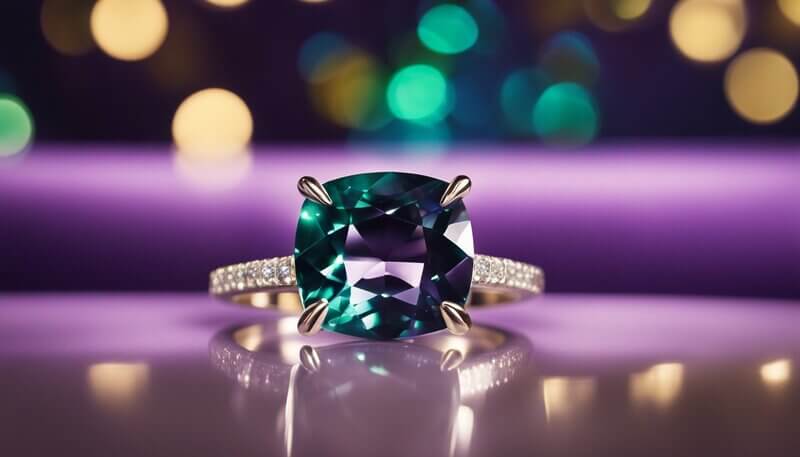
June’s birthstones—pearl, alexandrite, and moonstone—each possess a unique allure and rarity contributing to their value. These gemstones vary significantly in terms of their origins and the factors that define their worth.
Pearl Value Factors
- Several factors, such as size, shape, color, surface quality, and luster, define pearls’ value.
- Natural pearls are especially rare and, as a result, are significantly more expensive than cultured ones.
- The finest quality natural pearls have a high luster and a perfect round shape, which are uncommon and command higher prices.
- Pearls’ Mohs scale hardness ranges from 2.5 to 4.5, making them relatively softer than many other gemstones.
Factors Affecting Alexandrite Value
- Alexandrite is a remarkable gemstone known for its color-change phenomenon—it can appear green in daylight and purplish-red under incandescent light.
- Natural alexandrite is rare and highly valuable, and its quality is determined by the degree of color change, clarity, cut, and carat weight.
- Due to its scarcity, a fine quality alexandrite can be much more expensive than other gemstones.
- It measures 8.5 on the Mohs scale, indicating good hardness suitable for everyday wear.
Moonstone Valuation
- Moonstone is treasured for its adularescence, a soft glow or luster that floats within the stone.
- The more pronounced and attractive this phenomenon, the higher the moonstone’s value. Clarity also plays a role—transparent moonstones with a blue sheen are typically the most sought-after.
- Moonstone ranks at 6 to 6.5 on the Mohs scale of hardness, which should be considered when used in jewelry that requires durability.
Symbolism and Folklore
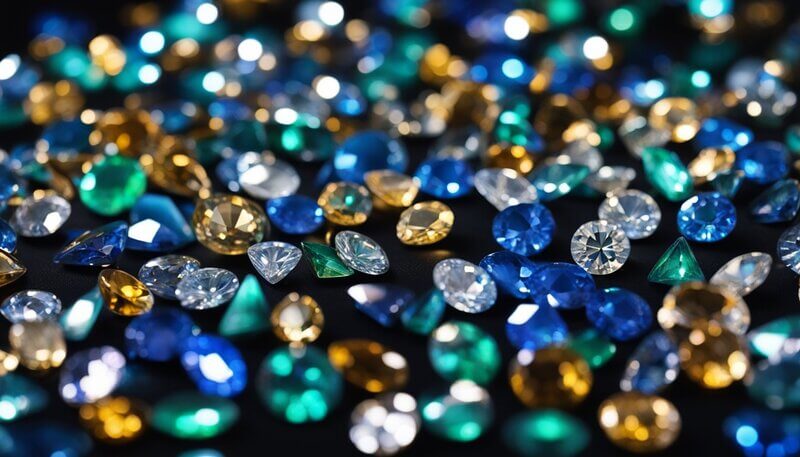
The June gemstones—pearl, alexandrite, and moonstone—carry rich symbolism and folklore steeped in history from cultures around the world. Each stone harbors a unique connection to legend, royalty, and spiritual attributes such as fertility, good luck, and intuition.
Pearl Symbolism
Pearls, long treasured by ancient civilizations, are synonymous with purity and fertility. They signify status and were often worn by royalty to symbolize their wealth and power.
The allure of pearls comes from their lustrous appearance and beliefs that they bring good fortune to the wearer.
Alexandrite Lore
The captivating alexandrite gemstone, recognized for its remarkable color-change ability, is associated with balance and renewal.
It is said that owning an alexandrite brings good luck and enhances intuition.
This rare gem is also believed to boost creativity and imagination, aligned with those who seek inspiration.
Moonstone Folklore
Moonstone is enveloped in mystique and lore, linked with the moon itself.
This gem is thought to enhance intuition and connect to the divine feminine, making it a symbol of fertility and good fortune.
It’s also famed for its ability to inspire creativity and emotional balance, aiding those in tune with their inner selves.
Astrological Associations
The astrological associations of June birthstones are deeply intertwined with the zodiac signs Gemini and Cancer. These stones are believed to resonate with the energies of the corresponding astrological period and bestow various benefits.
Zodiac Connections
Gemini (May 21 – June 20): The early part of June is governed by Gemini, an air sign symbolized by the twins.
Gemini’s astrological stone is the Pearl, associated with the June Moonstone and Mother Of Pearl birthstones.
Pearls are believed to amplify Gemini’s natural curiosity, intellect, and adaptability.
Cancer (June 21 – July 22): Dominating the latter half of June, Cancer is a water sign represented by the crab.
The Moonstone is a fitting emblem for those born under Cancer, reflecting themes of emotions and self-esteem central to this sign.
The Moonstone aligns with Cancer’s ruling celestial body, the Moon (or Luna), enhancing emotional depth and fostering nurturance.
Birthstone and Month
June: June claims multiple birthstones, offering a variety for individuals to connect with their astrological sign. Each stone carries distinct meanings and astrological significance:
- Pearl: Symbolizes purity and is linked to emotional clarity and integrity.
- Moonstone: Encourages emotional balance and is thought to bring good fortune.
- Alexandrite: Known for its color-changing properties—green in daylight and red in artificial light—reflects versatility and is linked with Aries and Leo to a lesser extent, offering an alternative aspect of courage and confidence.
It is believed that these birthstones can influence one’s emotional well-being and self-esteem. They particularly resonate with the nurturing and protective nature of Cancer while also supporting the versatile and communicative traits of Geminis.
Choosing the Right June Birthstone
June offers a unique variety of birthstones, providing a wealth of options for personal expression through jewelry. Whether one prefers the classic luster of a pearl or the color-changing marvel of alexandrite, selecting a June birthstone is a deeply personal choice that reflects individual style and significance.
Personal Preferences
When selecting a June birthstone, one should consider their personal connection to the gem.
Pearls evoke the tranquility of the sea and are considered timeless, offering a subtle elegance that complements both formal and casual attire.
- For those fascinated by the moon’s allure, a moonstone captures its essence with a shimmer that varies with the lighting.
- These gems make exquisite necklaces or pendants, which catch the light and showcase their beauty.
- The rarer alexandrite changes color from green in daylight to red in incandescent light, adding a sense of magic to any jewelry, such as a ring or an engagement ring.
Custom Jewelry
Custom-designed jewelry allows for a tailored expression of one’s taste and personality.
A custom ring bearing a June birthstone can have a minimalist setting that highlights the gem’s natural beauty or a more intricate design that tells a unique story.
Personalized engagement rings with a June birthstone are especially meaningful, symbolizing both the couple’s individuality and their union.
Crafting a custom necklace or pendant lets one choose the precise stone, setting, and metal that resonates with their preferences, resulting in an exclusive piece that reflects their innermost self.
Whether for casual everyday wear or a celebratory milestone, custom jewelry is a testament to one’s distinct taste and the multifaceted wonders of June’s gemstones.
Frequently Asked Questions
In this section, readers will find replies to some of the most common inquiries regarding the gemstones traditionally associated with June.
1. What gemstone is traditionally associated with the month of June?
June is traditionally associated with the pearl, an organic gem formed inside mollusks and considered a symbol of purity.
2. Which birthstones are designated for those born in June?
Those born in June can claim two principle birthstones: the pearl and the alexandrite. Each offers a unique aura and history.
3. What are the differences between June’s multiple birthstones?
June’s birthstones differ significantly. Pearls are organic and originate from water creatures, while alexandrites are rare, color-changing minerals. The latter exhibits remarkable shades that shift from green in daylight to purplish-red under incandescent light.
4. How are the June birthstones connected to the zodiac sign Gemini?
The June birthstones, particularly the pearl and the emerald, are believed to amplify Gemini’s positive traits, such as adaptability and communication skills. They also aid in self-discovery and spiritual growth.
5. What colors represent the June birthstones?
A spectrum of colors represents the June birthstones. Pearls are usually white but can range in hues, and alexandrites shift from vibrant greens to deep purples.
6. Can the June birthstone vary depending on different traditions or cultures?
Yes, the choice of June birthstone can vary. Some cultures may have different stones associated with June due to their historical, geographical, or cultural significance.

